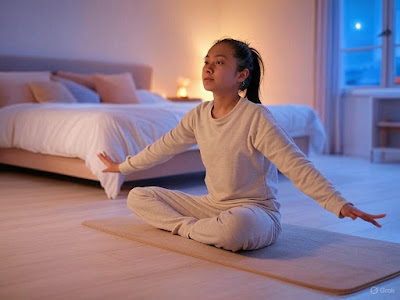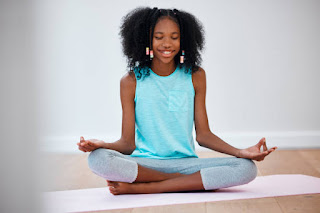Building Emotional Resilience: How Yoga Helps You Bounce Back
Building Emotional Resilience: How Yoga Helps You Bounce Back
Understanding Emotional Release in Yoga
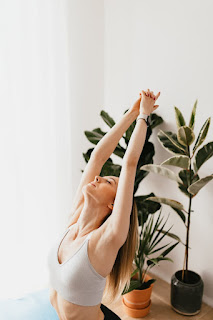
What is Emotional Release in Yoga?
Emotional release in yoga involves using the practice to better understand yourself and connect with your emotions, especially those you tend to avoid. Through physical postures, breathing techniques, and meditation, yoga helps to release pent-up emotions and energy stored in the body.
Using your breath as a guide, and various poses to facilitate the release, you may find long-term pains and tensions finally letting go after years of being held in your body. This process allows for the unlocking of stored emotions, leading to an emotional release that can be profoundly therapeutic.
The practice of yoga not only helps in the physical release of tension but also promotes emotional resilience. By regularly engaging in yoga, you create a space for emotional processing and healing, which can significantly improve your ability to cope with stress and bounce back from emotional challenges. This holistic approach fosters a deeper connection between mind and body, enhancing overall well-being and emotional health.
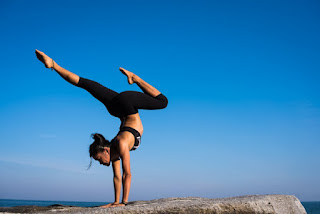
The Power of Yoga for Emotional Resilience
Reducing Emotional Tension
Yoga practice strengthens the physical, mental, and emotional bodies, increasing the capacity to process difficult emotions and past traumas. By engaging in yoga, individuals can effectively reduce emotional tension and release emotional tension through a multi-faceted approach.
Breath and Tension Release
One of the key components of yoga is the emphasis on breathwork, known as pranayama. Controlled breathing techniques help calm the nervous system, bringing a sense of peace and relaxation. As you breathe deeply and rhythmically, you activate the parasympathetic nervous system, which reduces the body’s stress response. This allows the release of physical tension, which often harbors emotional stress.
In poses that stretch and open areas of the body where tension is commonly stored, such as the hips, shoulders, and back, you may experience an emotional release. This process can be intense but ultimately healing, as it allows long-held emotions to surface and be processed.
The Role of Regular Practice
Regular yoga practice can lead to a significant decrease in stress, anxiety, and depression. The combination of physical movement, breathwork, and mindfulness creates a holistic approach to emotional health. Over time, this practice builds emotional resilience, equipping you with tools to handle life’s challenges with greater ease.
Connecting with Previous Practices
For those who have explored my previous articles on metta meditation and guided meditation for stress, integrating yoga into your routine can enhance these practices. Metta meditation, which focuses on cultivating loving-kindness, pairs well with yoga’s heart-opening poses. Guided meditation for stress can be complemented by the physical release of tension achieved through yoga postures.
Incorporating these techniques creates a comprehensive approach to emotional well-being, leveraging the strengths of each practice to foster a more resilient and balanced emotional state.
Release Emotions Through Yoga
Yoga provides a safe space to release emotions, allowing for a deeper connection with the self. The structured and supportive environment of a yoga practice creates a sanctuary where you can explore your emotions without fear of judgment. The combination of mindful movement and introspective focus encourages self-awareness and introspection. This safe space enables you to confront and process emotions that might have been buried or ignored, fostering a deeper understanding of yourself.
Releasing emotions through yoga can lead to a sense of freedom and joy. Yoga can help release subconscious emotions by allowing the body to let go of tension connected to emotional pain, helping individuals become aware of their subconscious emotions. Pent-up emotions, when left unaddressed, can manifest as physical tension, stress, and emotional turmoil. These suppressed feelings can impact various aspects of life, from relationships to overall well-being. Yoga offers a path to freedom by providing a method to physically and emotionally release these built-up tensions. Through regular practice, you can experience a profound sense of liberation and happiness as you let go of emotional burdens and create space for positive, uplifting feelings.
Yoga helps to process and integrate emotions, promoting emotional resilience. By regularly engaging in yoga, you develop tools to manage and process emotions effectively. The practice encourages emotional intelligence by helping you recognize and understand your emotional responses in different situations. This heightened awareness allows for better emotional regulation and adaptability. In moments of stress or emotional upheaval, the skills honed through yoga enable you to remain calm, centered, and resilient. This resilience extends beyond the mat, improving your ability to handle life’s challenges with grace and poise.
In summary, yoga not only provides a safe and supportive environment for emotional release but also promotes a deeper connection with the self. It helps to free you from the weight of pent-up emotions, leading to a sense of joy and liberation. Additionally, yoga enhances emotional resilience and intelligence, equipping you with the tools to navigate the complexities of life with greater ease and stability.

Yoga Techniques for Emotional Release
Pranayama and Pratyahara for Emotional Release
Pranayama breathing techniques, such as Dirga (Three-Part Breath) and Kapalabhati (Breath of Fire), can help release emotions by engaging the parasympathetic nervous system. These techniques encourage deep, mindful breathing, which helps calm the mind and body. Dirga breath focuses on filling the lungs completely, bringing a sense of calm and grounding. Kapalabhati, with its forceful exhalations, helps release stagnant energy and invigorates the body, making it easier to release emotional blockages.
Pratyahara, or inward focus, helps to bring awareness to physical sensations and emotional feelings, encouraging release. This practice involves withdrawing the senses from external stimuli and turning the attention inward. By doing so, you become more attuned to subtle changes in your body and emotions, allowing for a deeper understanding and release of pent-up feelings.
8 Yoga Poses for Emotional Release, Including Child’s Pose
- Child’s Pose (Balasana): This pose opens the back body and releases the glutes and hips, bringing focus inward and soothing the nervous system. Child’s Pose creates a safe and comforting space, allowing for emotional release and grounding. Holding this pose longer than usual can provide emotional integration and a safe space for emotional expression and processing.
- Pigeon Pose (Eka Pada Rajakapotasana): Pigeon Pose provides a deep physical stretch through the lower half of the body, particularly the hips. It balances the second chakra, associated with emotions and creativity, allowing for easier change and acceptance.
- Downward Facing Dog (Adho Mukha Svanasana): This pose stretches the entire backside of the body, creating space between vertebrae and triggering the parasympathetic nervous system. It helps release tension from the back and shoulders, promoting emotional release.
- Bound Angle (Baddha Konasana): Bound Angle Pose opens the hips and groin, which are areas where emotional tension is often stored. This pose encourages relaxation and emotional release, fostering a sense of openness and ease.
- Camel Pose (Ustrasana): Camel Pose stretches the front body, including the chest and abdomen, which can hold emotional tension. This heart-opening pose helps release emotions associated with the heart chakra, promoting feelings of love and compassion.
- Forward Bend with Undulations (Uttanasana): This variation of Forward Bend involves gentle movements and undulations, helping to release tension from the spine and hamstrings. It encourages a flowing release of emotions and physical tension.
- Legs Up the Wall (Viparita Karani): This restorative pose calms the nervous system and promotes relaxation. By reversing the blood flow and gently stretching the legs and lower back, it helps release emotional and physical tension.
- Seated Forward Bend (Paschimottanasana): This pose stretches the entire backside of the body, promoting relaxation and emotional release. It helps calm the mind and soothe the nervous system, allowing for a deeper connection with the self.
Incorporating these pranayama techniques and yoga poses into your practice can significantly aid in emotional release and promote overall well-being. Each pose and breathing technique offers unique benefits, helping to create a balanced and resilient emotional state.
Creating a Safe Space for Emotional Release
A Supporting Environment
A supportive yoga environment is essential for emotional release, providing a safe space to process and integrate emotions. Different environments and activities can work for various emotional states, making it important to tailor the setting to the needs of the practitioner.
- Quiet and Private Spaces: For individuals dealing with intense emotions or past traumas, a quiet and private space can offer the security needed to fully engage in the practice. This environment minimizes distractions and allows for deep introspection and emotional release without fear of judgment or interruption.
- Nature and Outdoor Settings: Practicing yoga outdoors, in a park, or by the water, can be incredibly grounding and soothing. The natural environment can help release emotions tied to stress and anxiety by providing a sense of connection to the earth and the elements. The fresh air and natural sounds can enhance the calming effect of the practice.
- Group Classes: For those who thrive on community support, group yoga classes can provide a sense of belonging and shared experience. The collective energy and support from fellow practitioners can help individuals feel less isolated in their emotional journey. Group settings can be particularly effective for releasing emotions related to loneliness or social anxiety.
- Specialized Workshops: Workshops focused on emotional release, such as trauma-informed yoga or yoga for mental health, offer targeted support for specific emotional needs. These sessions are often led by teachers trained to handle delicate emotional states, providing a safe and informed environment for deeper work.
Choosing the Right Yoga Teacher
Selecting a yoga teacher who fits your needs and fosters a supportive environment is crucial for emotional release. Here’s how to pick the right teacher:
Look for Qualifications and Experience: Choose a teacher with proper certifications and experience, especially in areas related to emotional well-being, such as trauma-informed yoga or yoga therapy. A well-qualified teacher will have the knowledge and skills to guide you safely through your practice.
Attend a Trial Class: Before committing to a teacher, attend a few trial classes to get a sense of their teaching style and the class environment. Pay attention to how the teacher interacts with students, the clarity of their instructions, and the overall atmosphere of the class.
Seek Personal Recommendations: Ask friends, family, or colleagues for recommendations. Personal testimonials can provide valuable insights into a teacher’s ability to create a supportive and safe space for emotional release.
Consider Their Approach to Emotional Safety: A good yoga teacher should emphasize creating a safe and inclusive environment. They should encourage self-compassion, offer modifications for different abilities, and maintain a non-judgmental approach. Look for teachers who prioritize emotional safety in their classes.
Assess Compatibility: Ensure that you feel comfortable and supported by the teacher. The teacher’s personality, communication style, and approach should resonate with you. Trust and comfort are essential for allowing emotional release.
Check for Specializations: If you have specific emotional needs, such as dealing with trauma or anxiety, look for teachers who specialize in those areas. Specialized training can make a significant difference in the effectiveness of your practice.
Read Reviews and Testimonials: Online reviews and testimonials can provide additional information about a teacher’s reputation and effectiveness. Look for consistent positive feedback about the teacher’s ability to create a safe and supportive environment.
By carefully selecting a yoga teacher who meets your needs and provides a nurturing environment, you can create a safe space for emotional release. This supportive setting is crucial for allowing practitioners to process and integrate their emotions, leading to greater emotional resilience and well-being.
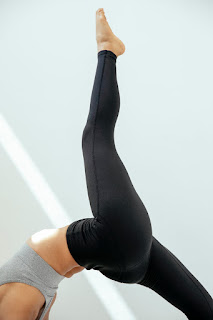
Integrating Emotional Release into Daily Life
Working Through Emotions
Working Through Emotions
Yoga practice can help process and integrate emotions, promoting emotional resilience. When you work through emotions during a yoga class, the skills and insights gained can translate to your daily life. By practicing mindfulness, breath control, and physical movement, you learn to identify and understand your emotional states. This awareness helps in better emotional regulation, making it easier to manage emotions in various situations outside the yoga studio.
Incorporating the principles of yoga into your daily routine can provide a consistent and effective way to address and process emotions. For example, taking a few minutes each day to practice deep breathing or gentle stretching can help you stay grounded and centered, even amidst the challenges of everyday life. This regular practice encourages a healthier approach to dealing with stress and emotional upheaval.
Building Emotional Resilience
Regular yoga practice can lead to increased emotional resilience, allowing for better coping with strong emotions and intense situations. By continuously engaging with your emotions through yoga, you develop a greater understanding of your emotional patterns and triggers. This knowledge empowers you to respond to emotional challenges with greater calmness and clarity.
Yoga helps to develop a greater awareness of emotional energies, allowing for a more mindful approach to emotional response. As you become more attuned to your body’s signals and emotional cues, you can navigate your emotional landscape more effectively. This heightened awareness fosters a sense of balance and stability, enabling you to approach difficult situations with a composed and resilient mindset.
By integrating yoga techniques such as pranayama, meditation, and mindful movement into your daily life, you create a supportive framework for ongoing emotional growth and resilience. These practices help you stay connected to your inner self, making it easier to maintain emotional equilibrium and respond thoughtfully to life’s challenges.
In summary, by working through emotions in a yoga class and translating these practices into daily life, you can enhance your emotional regulation and resilience. Regular yoga practice not only supports emotional health but also cultivates a mindful and balanced approach to handling strong emotions and intense situations, promoting overall well-being.
